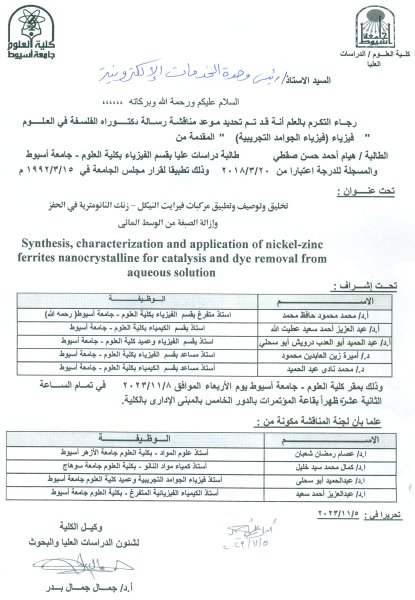Green synthesis and characterization of silver and copper nanoparticles and their use as an effective adsorbent for chromium removal and recovery from wastewater
Chromium (Cr) is one of the hazardous heavy metals that is naturally carcinogenic and causes various health problems. Metallic nanoparticles such as silver and copper nanoparticles (Ag NPs and Cu NPs) have gained great attention because of their unique chemical, physical, and biological attributes, serving diverse and significant role in various useful and sustainable applications. In the present study, both of these NPs were synthesized by green method in which Azadirachta indica plant extract was used. These nanoparticles were characterized by using advanced instrumental techniques such as Fourier transmission infrared (FTIR), X-ray diffraction (XRD), scanning electron microscope attached with energy-dispersive spectroscopy (SEM-EDS), and elemental mapping. These environmentally friendly nanoparticles were utilized for the batch removal of Cr from the wastewater. For analysis of adsorption behaviour, a range of kinetic isotherm models (Freundlich, Temkin, Dubinin, and Langmuir) and kinetic models (pseudo-first-order and pseudo-second-order) were used for the Cu-NPs and Ag-NPs. Cu NPs exhibited the highest Cr removal efficiency (96%) within a contact time of 10–15 min, closely followed by Ag NPs which achieved a removal efficiency of 94% under the similar conditions. These optimal outcomes were observed at a sorbent dose of 0.5 g/L for Ag NPs and 0.7 g/L for Cu NPs. After effectively capturing Cr using these nanoparticles, the sorbates were examined through SEM-EDX analysis to observe how much Cr metal was attached to the nanoparticles, potentially for future use. The analysis found that Ag-NPs captured 18% of Cr, while Cu-NPs captured 12% from the aqueous solution. More precise experimental conditions are needed for higher Cr removal from wastewater and determination of the best conditions for industrial-level Cr reuse. Although nanomaterial exhibit high efficiency and selectivity for Cr removal and recovery from wastewater, more research is necessary to optimize their synthesis and performance for industrial-scale applications and develop efficient methods for Cr removal and recovery.







